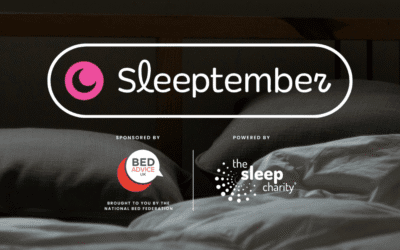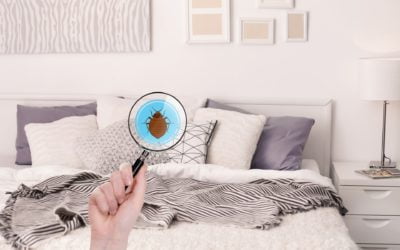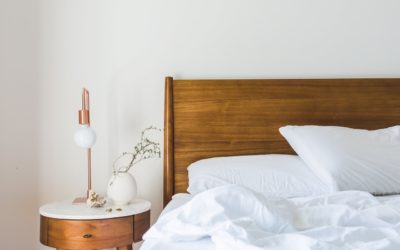Comfort – whether that’s the bed or the bedding – plays a large part in getting a good night’s sleep. But have you ever wondered about weighted gravity blankets?
Surging in popularity, weighted blankets are being bought to relieve stress and to improve sleep. In fact, David Baddie once said on the BBC Breakfast Show that he loves his weighted blanket. If you’re considering using one here’s all you need to know.
What is a weighted blanket and how does it work?
They are designed to provide a light, evenly distributed pressure (deep pressure stimulation) on your body that mimics the feeling of being held or hugged. There is research around them benefitting people with anxiety, autism, and insomnia, among other conditions.
What are the benefits of a weighted blanket?
Anxiety is a major problem for sleep and this type of pressure has been shown to increase serotonin, a neurotransmitter involved in the regulation of sleep that has a calming effect. At night time, serotonin undergoes metabolic changes to become melatonin, the chemical that induces sleep.
The feeling of being secure from a weighted blanket also encourages your body to produce feel-good hormone oxytocin which can relieve pain, help lower stress levels and alleviate depression while boosting your immune system. It can also help you sleep better at night by encouraging feelings of safety and security.
A Study from Journal of Sleep Medicine & Disorders (2015) found that a weighted blanket helped those with insomnia sleep better, simply because it helped them feel more settled before bed.
Concerns over weighted blankets
With so many on the market, and at hefty price points, it’s important to search for a good quality one. There are a lot that are sold that don’t consider body weight which is a worry. As a general rule, a weighted blanket should be 5-10% of your body weight.
Other factors you’ll want to consider when looking at blankets is what is used to weigh down the blankets. It can vary from plastic pellets to metal or glass beads. It also shouldn’t hang off the side of your bed.
Guidance on their use from the Royal College of Occupational Therapists also suggests only putting a blanket on children at the start of the night, regularly observing them, and then removing it, due to an accident in Canada. However, this can cause issues with sleep associations.
Adults should be able to freely move around by themselves and remove the blanket easily if it feels too heavy or hot.
People suffering with Obstructive Sleep Apnoea, asthma and claustrophobia should avoid using them.
Do they work?
Basically, they may work for some and not for others! Even if you’re using a weighted blanket, don’t let the rest of your sleep hygiene slip. It’s still important to keep regular sleep patterns, switch off tech, avoid food and drink that hinder sleep, exercise and keep an ideal bedroom environment.






0 Comments